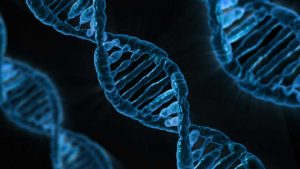Fiona, the little dun mare who set the internet abuzz last month, has been confirmed through DNA testing to be a Przewalski horse.
The results, which were completed by Texas A&M University, have been posted to Lazy B Equine Rescue and Sanctuary, a Utah rescue that picked up the mare at an auction in June.
Although Fiona’s age cannot be determined, three breed probabilities are listed in order of probability: Przewalski, Ethiopian Barb, and Morgan horse.
Because Przewalski horses have a different number of chromosomes than domestic horses, karyotyping can be completed through another lab at Texas A&M using blood samples to confirm with 100 percent certainty that Fiona is nothing but a Przewalski horse. But, simply put, the odds are pretty good at this point.
The Przewalski horse (Equus ferus przewalskii) is a unique subspecies of wild horse native to the steppes of central Asia. One primary difference between Przewalski horses and domestic horses (Equus ferus caballus) lies in their chromosome numbers. Przewalski horses have 66 chromosomes, while domestic horses have 64.
Horse DNA tests are completed using hair samples from the horse’s mane or tail that contain genetic data in their roots.
Through extensive collection and genotyping of horse breeds and populations worldwide, researchers have curated a reference panel for ancestry testing, comprising 50 of the most common horse breeds in North America. These breeds represent major groups such as draft horses, ponies, Oriental and Arabian breeds, and both Old World and New World Iberian breeds.
Ancestry testing at Texas A&M University compares the DNA genotype of a subject horse to the reference panel of 50 breeds using a computer program based on maximum likelihood analysis. This process calculates the probability of the subject horse being descended from each reference breed.
The test results identify the three breeds with the highest probability of being ancestral breeds, listed in order of probability. While the test is fairly accurate for purebred horses, assigning them to their correct breeds decreases the accuracy with the complexity of crossbreeding. For example, a purebred horse will almost always be assigned to its correct breed, and a two-breed cross will likely show high probabilities for both parental breeds. However, with more complex crossbreeding, the accuracy diminishes, and the results may not always reflect all the ancestral breeds.

Texas A&M explains that while it’s important to note that even if three breeds are reported, it does not necessarily mean the subject horse has all three in its ancestry. Similar breeds within related groups can yield comparable probabilities, leading to potential misidentifications. For instance, a half-Belgian draft and half-Suffolk horse might show results for Percheron or even a pony breed, due to the genetic similarities among these draft breeds. Similarly, breeds with Thoroughbred influence may show similarities to Warmblood breeds.
Globally, there are more than 58 million horses, with over 10 million residing in the United States (according to FAO 2013 data). Determining the exact number of horse breeds is challenging due to varying counts across different databases. The Domestic Animal Diversity System lists 1,549 breeds, including duplicates where breeds like Arabian and Thoroughbred are counted multiple times in different countries.
Oklahoma State University’s Department of Animal Sciences maintains a database of over 200 breeds listed alphabetically. In comparison, Hendricks’ International Encyclopedia of Horse Breeds describes nearly 400 breeds, estimating that there are well over 600 breeds in existence.
Watch on TikTok
Meanwhile, TikTok user Kassidy Huckabay still says that her stallion Shrek has also been confirmed by DNA to be a Przewalski horse.
While no proof of Shrek’s DNA test has been posted to confirm his heritage, and Huckabay has since shut off commenting on her posts, regular videos of the stallion are posted to her social media channel.


